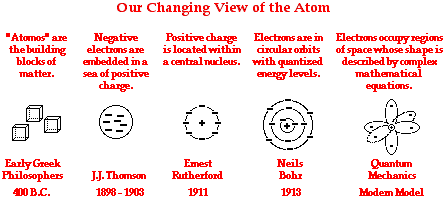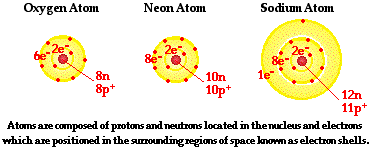Hold down the T key for 3 seconds to activate the audio accessibility mode, at which point you can click the K key to pause and resume audio. Useful for the Check Your Understanding and See Answers.
 There is a large overlap of the world of static electricity and the everyday world that you experience. Clothes tumble in the dryer and cling together. You walk across the carpeting to exit a room and receive a door knob shock. You pull a wool sweater off at the end of the day and see sparks of electricity. During the dryness of winter, you step out of your car and receive a car door shock as you try to close the door. Sparks of electricity are seen as you pull a wool blanket off the sheets of your bed. You stroke your cat's fur and observe the fur standing up on its end. Bolts of lightning dash across the evening sky during a spring thunderstorm. And most tragic of all, you have a bad hair day. These are all static electricity events - events that can only be explained by an understanding of the physics of electrostatics.
There is a large overlap of the world of static electricity and the everyday world that you experience. Clothes tumble in the dryer and cling together. You walk across the carpeting to exit a room and receive a door knob shock. You pull a wool sweater off at the end of the day and see sparks of electricity. During the dryness of winter, you step out of your car and receive a car door shock as you try to close the door. Sparks of electricity are seen as you pull a wool blanket off the sheets of your bed. You stroke your cat's fur and observe the fur standing up on its end. Bolts of lightning dash across the evening sky during a spring thunderstorm. And most tragic of all, you have a bad hair day. These are all static electricity events - events that can only be explained by an understanding of the physics of electrostatics.
Not only do electrostatic occurrences permeate the events of everyday life, without the forces associated with static electricity, life as we know it would be impossible. Electrostatic forces - both attractive and repulsive in nature - hold the world of atoms and molecules together in perfect balance. Without this electric force, material things would not exist. Atoms as the building blocks of matter depend upon these forces. And material objects, including us Earthlings, are made of atoms and the acts of standing and walking, touching and feeling, smelling and tasting, and even thinking is the result of electrical phenomenon. Electrostatic forces are foundational to our existence.
One of the primary questions to be asked in this unit of The Physics Classroom is: How can an object be charged and what affect does that charge have upon other objects in its vicinity? The answer to this question begins with an understanding of the structure of matter. Understanding charge as a fundamental quantity demands that we have an understanding of the structure of an atom. So we begin this unit with what might seem to many students to be a short review of a unit from a Chemistry course.
History of Atomic Structure
The search for the atom began as a philosophical question. It was the natural philosophers of ancient Greece that began the search for the atom by asking such questions as: What is stuff composed of? What is the structure of material objects? Is there a basic unit from which all objects are made? As  early as 400 B.C., some Greek philosophers proposed that matter is made of indivisible building blocks known as atomos. (Atomos in Greek means indivisible.) To these early Greeks, matter could not be continuously broken down and divided indefinitely. Rather, there was a basic unit or building block that was indivisible and foundational to its structure. This indivisible building block of which all matter was composed became known as the atom.
early as 400 B.C., some Greek philosophers proposed that matter is made of indivisible building blocks known as atomos. (Atomos in Greek means indivisible.) To these early Greeks, matter could not be continuously broken down and divided indefinitely. Rather, there was a basic unit or building block that was indivisible and foundational to its structure. This indivisible building block of which all matter was composed became known as the atom.
The early Greeks were simply philosophers. They did not perform experiments to test their theories. In fact, science as an experimental discipline did not emerge as a credible and popular practice until sometime during the 1600s. So the search for the atom remained a philosophical inquiry for a couple of millennia. From the 1600s to the present century, the search for the atom became an experimental pursuit. Several scientists are notable; among them are Robert Boyle, John Dalton, J.J. Thomson, Ernest Rutherford, and Neils Bohr.
Boyle's studies (middle to late 1600s) of gaseous substances promoted the idea that there were different types of atoms known as elements. Dalton (early 1800s) conducted a variety of experiments to show that different elements can combine in fixed ratios of masses to form compounds. Dalton subsequently proposed one of the first theories of atomic behavior that was supported by actual experimental evidence.
English scientist J.J. Thomson's cathode ray experiments (end of the 19th century) led to the discovery of the negatively charged electron and the first ideas of the structure of these indivisible atoms. Thomson proposed the Plum Pudding Model, suggesting that an atom's structure resembles the favorite English dessert - plum pudding. The raisins dispersed amidst the plum pudding are analogous to negatively charged electrons immersed in a sea of positive charge.
Nearly a decade after Thomson, Ernest Rutherford's famous gold foil experiments led to the nuclear model of atomic structure. Rutherford's model suggested that the atom consisted of a densely packed core of positive charge known as the nucleus surrounded by negatively charged electrons. While the nucleus was unique to the Rutherford atom, even more surprising was the proposal that an atom consisted mostly of empty space. Most the mass was packed into the nucleus that was abnormally small compared to the actual size of the atom.
Neils Bohr improved upon Rutherford's nuclear model (1913) by explaining that the electrons were present in orbits outside the nucleus. The electrons were confined to specific orbits of fixed radius, each characterized by their own discrete levels of energy. While electrons could be forced from one orbit to another orbit, it could never occupy the space between orbits.

Bohr's view of quantized energy levels was the precursor to modern quantum mechanical views of the atoms. The mathematical nature of quantum mechanics prohibits a discussion of its details and restricts us to a brief conceptual description of its features. Quantum mechanics suggests that an atom is composed of a variety of subatomic particles. The three main subatomic particles are the proton, electron and neutron. The proton and neutron are the most massive of the three subatomic particles; they are located in the nucleus of the atom, forming the dense core of the atom. The proton is charged positively. The neutron does not possess a charge and is said to be neutral. The protons and neutrons are bound tightly together within the nucleus of the atom. Outside the nucleus are concentric spherical regions of space known as electron shells. The shells are the home of the negatively charged electrons. Each shell is characterized by a distinct energy level. Outer shells have higher energy levels and are characterized as being lower in stability. Electrons in higher energy shells can move down to lower energy shells; this movement is accompanied by the release of energy. Similarly, electrons in lower energy shells can be induced to move to the higher energy outer shells by the addition of energy to the atom. If provided sufficient energy, an electron can be removed from an atom and be freed from its attraction to the nucleus.

Application of Atomic Structure to Static Electricity
This brief excursion into the history of atomic theory leads to some important conclusions about the structure of matter that will be of utmost importance to our study of static electricity. Those conclusions are summarized here:
- All material objects are composed of atoms. There are different kinds of atoms known as elements; these elements can combine to form compounds. Different compounds have distinctly different properties. Material objects are composed of atoms and molecules of these elements and compounds, thus providing different materials with different electrical properties.
- An atom consists of a nucleus and a vast region of space outside the nucleus. Electrons are present in the region of space outside the nucleus. They are negatively charged and weakly bound to the atom. Electrons are often removed from and added to an atom by normal everyday occurrences. These occurrences are the focus of this Static Electricity unit of The Physics Classroom.
- The nucleus of the atom contains positively charged protons and neutral neutrons. These protons and neutrons are not removable or perturbable by usual everyday methods. It would require some form of high-energy nuclear occurrence to disturb the nucleus and subsequently dislodge its positively charged protons. These high-energy occurrences are fortunately not an everyday event and they are certainly not the subject of this unit of The Physics Classroom. One sure truth of this unit is that the protons and neutrons will remain within the nucleus of the atom. Electrostatic phenomenon can never be explained by the movement of protons.
Summary of Subatomic Particles
|
|
Proton
|
Neutron
|
Electron
|
|
In nucleus
Tightly Bound
Positive Charge
Massive
|
In nucleus
Tightly Bound
No Charge
Massive
|
Outside nucleus
Weakly Bound
Negative Charge
Not very massive
|
A variety of phenomena will be pondered, investigated and explained through the course of this Static Electricity unit. Each phenomenon will be explained using a model of matter described by the above three statements. The phenomena will range from a rubber balloon sticking to a wooden door to the clinging together of clothes that have tumbled in the dryer to the bolt of lightning seen in the evening sky. Each of these phenomena will be explained in terms of electron movement - both within the atoms and molecules of a material and from the atoms and molecules of one material to those of another. In the next section of Lesson 1 we will explore how electron movement can be used to explain how and why objects acquire an electrostatic charge.
Check Your Understanding
Use your understanding of charge to answer the following questions. When finished, click the button to view the answers.
1. ____ are the charged parts of an atom.
a. Only electrons
b. Only protons
c. Neutrons only
d. Electrons and neutrons
e. Electrons and protons
f. Protons and neutrons